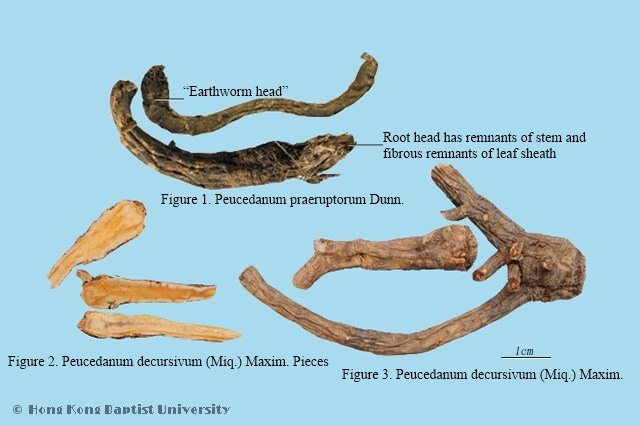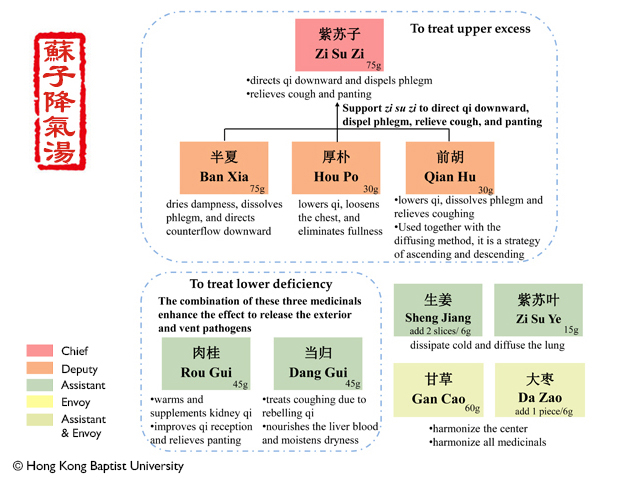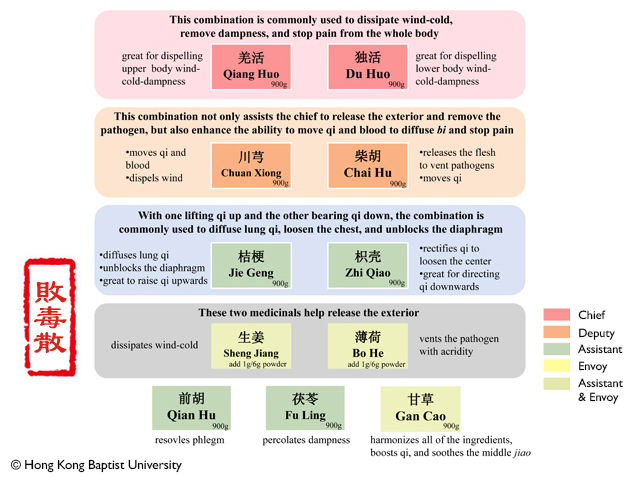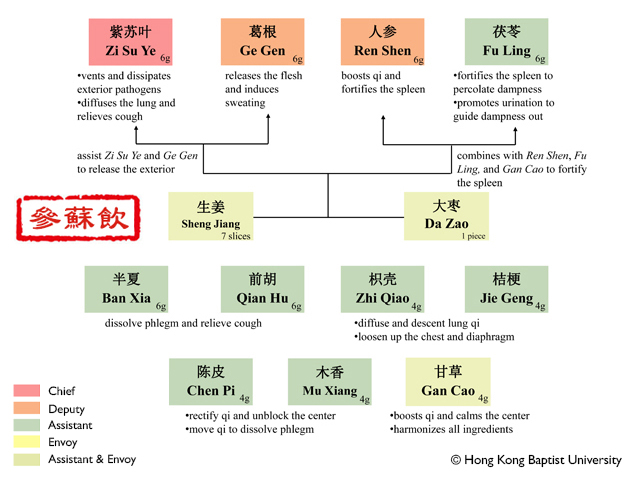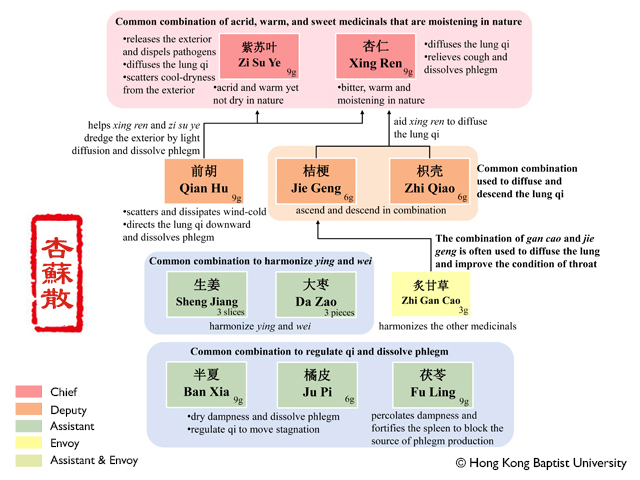Ginseng and Perilla Beverage
Action:Boosts qi, releases the exterior, rectifies qi, and dissolves phlegm.
Indication:This formula is indicated for a pattern of qi deficiency with contraction of external wind-cold, complicated by interior phlegm-dampness. Signs and symptoms include aversion to cold, fever, absence of sweat, headache, stuffy nose, cough, white phlegm, distended and suppressed chest and abdomen, fatigue, lassitude, short of breath, dislike of speaking, a white tongue coating, and a weak pulse.
